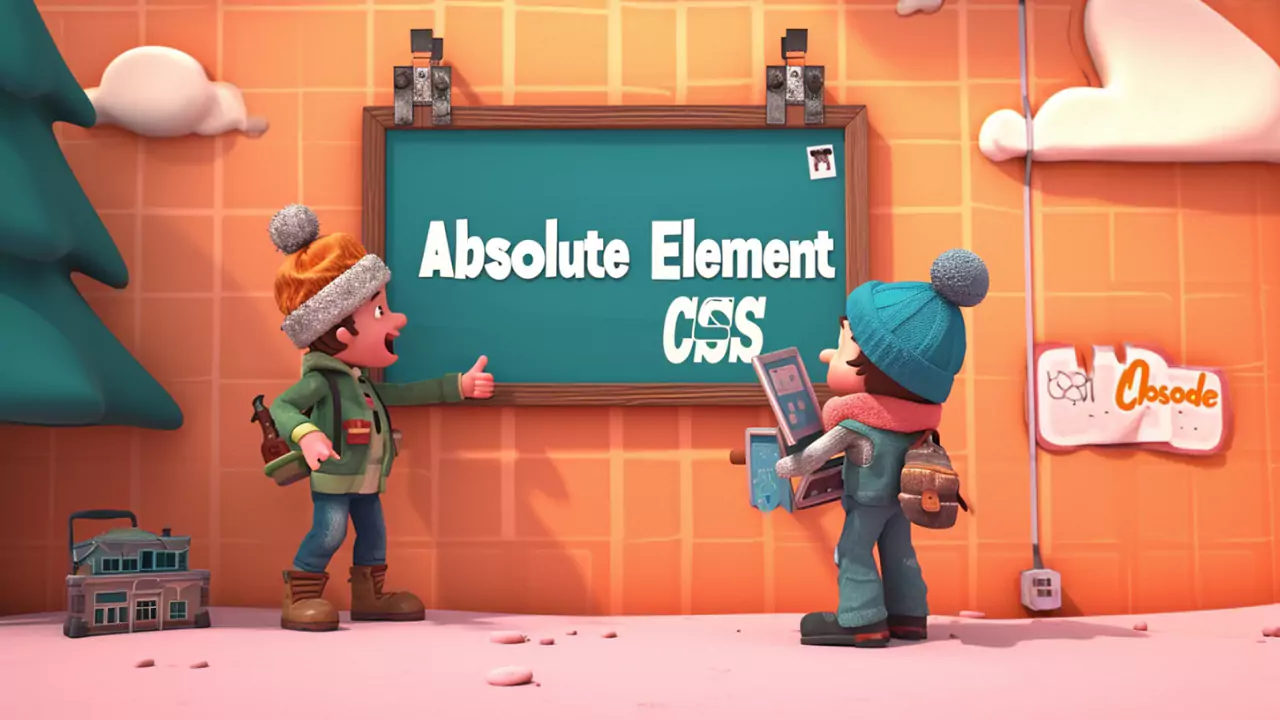Table of Contents
Centering elements with position: absolute in CSS can be tricky, especially for beginners. This article will guide you through the nuances of this technique, ensuring you have a clear understanding and practical knowledge to apply in your web designs.
The Basics of Absolute Positioning
Understanding the concept of absolute positioning is crucial. An element with position: absolute; is removed from the normal document flow and positioned relative to its nearest positioned ancestor. However, centering such an element requires additional steps.
Standard Method for Centering an Absolute Element
To center an element horizontally:
.element {
position: absolute;
left: 50%;
transform: translateX(-50%);
}And for vertical centering:
.element {
position: absolute;
top: 50%;
transform: translateY(-50%);
}Centering a Login Box
Imagine you need to center a login box on your webpage. This is a practical example where absolute centering is commonly used.
HTML:
<div class="login-container">
<div class="login-box">Login Form</div>
</div>CSS:
.login-container {
position: relative;
height: 100vh;
}
.login-box {
position: absolute;
top: 50%;
left: 50%;
transform: translate(-50%, -50%);
width: 300px;
padding: 20px;
background: #fff;
box-shadow: 0 4px 8px rgba(0,0,0,0.1);
}Centering a Notification Badge on a Profile Picture
Centering a notification badge over a profile picture is a popular design feature in social media interfaces.
HTML:
<div class="profile-container">
<img src="profile.jpg" alt="Profile Picture" class="profile-pic">
<div class="notification-badge">3</div>
</div>CSS:
.profile-container {
position: relative;
width: 100px;
height: 100px;
}
.profile-pic {
width: 100%;
height: 100%;
border-radius: 50%;
}
.notification-badge {
position: absolute;
top: 0;
right: 0;
width: 25px;
height: 25px;
background-color: red;
color: white;
border-radius: 50%;
display: flex;
justify-content: center;
align-items: center;
}Centering a Floating Action Button
Floating action buttons (FABs) in web design are often centered at the bottom of a container, providing a common use case for vertical centering with position: absolute.
HTML:
<div class="fab-container">
<button class="fab">+</button>
</div>CSS:
.fab-container {
position: relative;
height: 500px;
border: 1px solid #ddd;
}
.fab {
position: absolute;
right: 20px;
bottom: 20px;
width: 50px;
height: 50px;
border-radius: 50%;
background-color: blue;
color: white;
border: none;
}Troubleshooting Common Centering Issues
Occasionally, centering might not work as expected due to factors like overlapping elements or incorrect ancestor references. Ensuring the parent element’s position is defined and considering the dimensions of the centered element can resolve these issues.
FAQs on Centering with Absolute Positioning
How do I use position absolute to center an element in CSS?
To center an element using position absolute, set the parent element to position: relative and the child element to position: absolute with top, left, right, and bottom properties set to 0, and margin: auto.
What is the best way to achieve center absolute position in a webpage layout?
Achieving center absolute position involves setting the element to position: absolute and adjusting top and left properties to 50%, then using transform: translate(-50%, -50%) for precise centering.
Is centering position absolute effective for responsive design?
Centering with position absolute can be effective in responsive design, but it requires careful adjustments with media queries to maintain center alignment across different screen sizes.
Can I center a div with absolute positioning inside a relative container?
Yes, to center a div with absolute positioning, place it inside a relatively positioned container and use top, left, right, and bottom set to 0 along with margin: auto.
How does absolute center position differ from relative positioning?
Absolute center position removes the element from the normal document flow and positions it relative to its nearest positioned ancestor, unlike relative positioning which adjusts the element’s position without removal from the flow.
What are the challenges in using center position absolute for dynamic content?
When using center position absolute for dynamic content, the main challenge is ensuring that the element remains centered regardless of content size changes, requiring adaptive CSS or JavaScript solutions.
In CSS, how is absolute position center achieved for an overlay?
For an overlay, absolute position center is achieved by setting the overlay to position: absolute, top: 50%, left: 50%, and using transform: translate(-50%, -50%) for precise alignment.
What are the key considerations when using position center absolute in a flex container?
When using position center absolute in a flex container, ensure the container has position: relative and the item is styled with position: absolute and centered using top, left, right, bottom, and margin: auto.
Can I use center with position absolute for vertically centering in a section?
Yes, you can vertically center an element in a section using position absolute by setting top: 50% and transform: translateY(-50%) on the element.
What’s the difference between absolute positioning center and margin auto centering?
Absolute positioning center removes the element from normal flow and positions it based on the nearest relative container, while margin auto works within the document flow, centering the element within its containing block.
Conclusion
Centering elements using position: absolute enhances your web design capabilities. The methods and examples provided in this article should equip you with the skills to apply this CSS technique effectively in various design scenarios.
